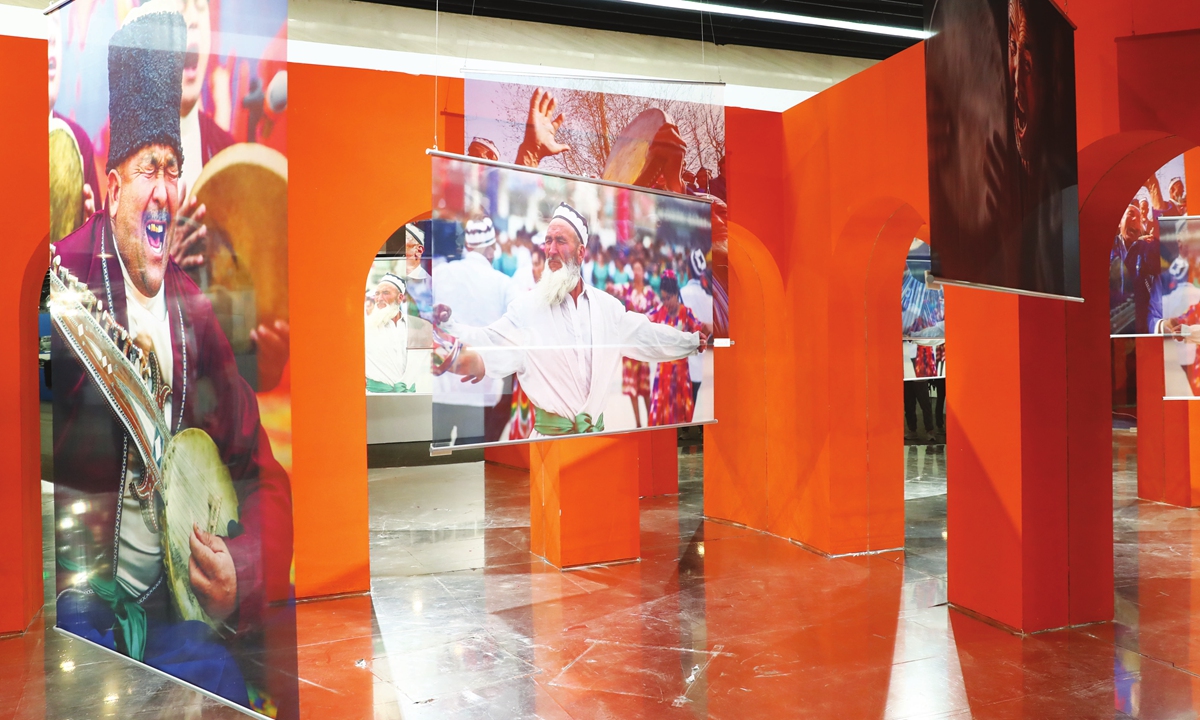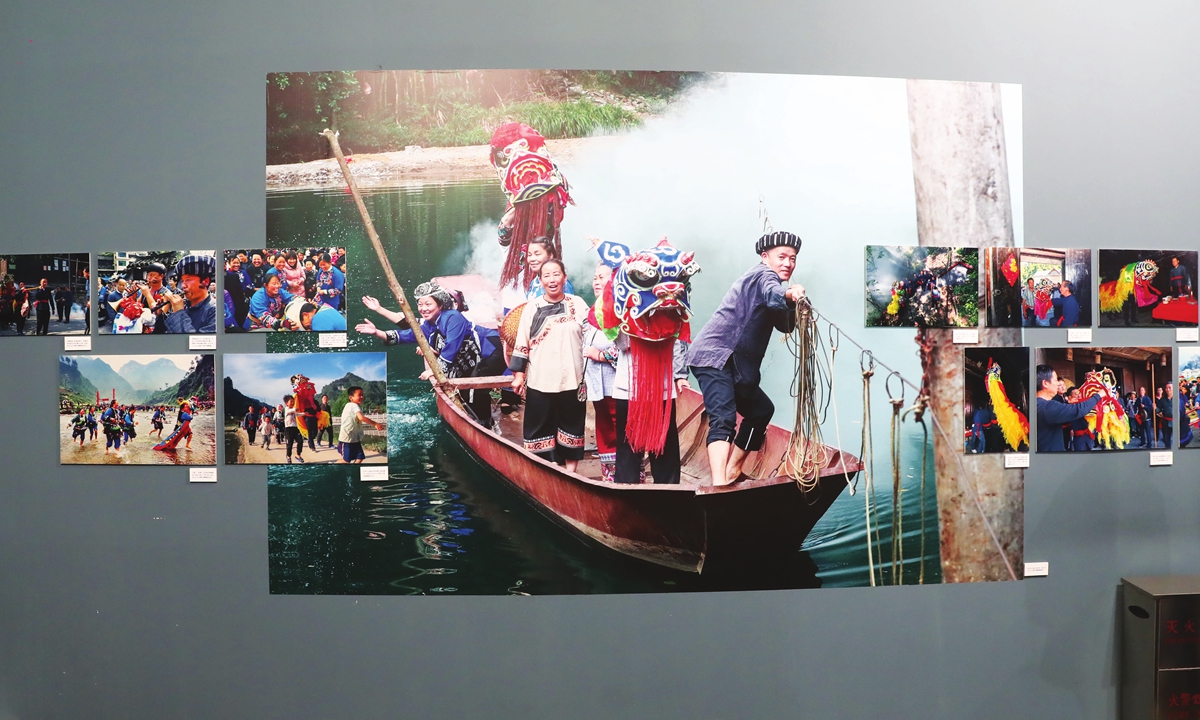ARTS / PHOTOGRAPHY
Beijing photo exhibition aims lens at thriving ethnic culture
Unity in diversity

The 2022 Chinese Visual Ethnographic Photo Biennale in Beijing Photos: Chinese National Museum of Ethnology
The 2022 Chinese Visual Ethnographic Photo Biennale, which aims to collect and preserve the unique history, culture and cherished memories of China's various ethnic groups, opened in Beijing on Tuesday.The exhibition combines a grand narrative of the contemporary lives of Chinese ethnic groups with vivid local scenery, connects ancient Chinese civilization to the new era and mirrors the evolution and rebirth of the traditional culture of the Chinese nation amidst modernization.
The exhibition, the fourth since it started in 2016, collected more than 23,000 photos from more than 1,000 photographers from around the country. After careful selection by judges, around 900 works are on display at the exhibition, a member of the Chinese National Museum of Ethnology, one of the event's sponsor organizations, told the Global Times.
The photographers taking part in the exhibition come from all over China and from various backgrounds such as university students or migrant workers. Some are amateur photographers, while others are professionals.
Their works cover a wide range of themes, some reflecting the evolution and leaps and bounds taken in regional development, while others presenting the inheritance of China's fine traditional culture.
Liu Hui is one of the photographers whose works are on display at the exhibition. His photos document his in-depth exploration of Daliyaboyi, a village in Yutian county, Northwest China's Xinjiang Uygur Autonomous Region. Over the past decade, Liu has recorded the multitude of changes that have taken place in the village and the impact these have had on villagers' lives. He has taken more than 150,000 photos of these villagers who originally lived in the desert.
The photos at the exhibition focus on an old herdsman in the village. The herdsman and his family have benefited from local poverty-relief policies, moving from the desert to a new town with paved roads. Escaping from a tough environment, the herdsman establishes a new life for himself and his family that blends tradition and modernity.
For instance, the herdsman holds a wedding ceremony for his daughter in 2013, goes shopping at the mall in downtown with his daughter and grandchildren in 2019 after he moves into a new roomy house. These ordinary scenes show the improved and better life of local people.
Yan Shuzhen's works have also been selected for the exhibition. In a connected series of photos, the photographer creates a window for viewers to appreciate a special traditional ceremony of the Mongolian ethnic group.
The cutting hair ceremony is one of the most important and grand ceremonies on the path to adulthood among ethnic Mongolians. During the ceremony, elders send their best wishes for the future to the children taking part, while songs and speeches of praise full of traditional values reveal the rich characteristics of the ethnic group.
Endeavors to make use of traditional activities to alleviate poverty among various ethnic groups such as the Lisu, Oroqen and Hani are also on display at the exhibition.
At the biennale, many realistic and moving works grabbed people attention. These works demonstrate the progress of China's ethnic groups and show the backbone and full picture of the unified spirit that binds the country's diverse cultures.
As a spiritual home for the unity of China's 56 ethnic groups, the biennale has demonstrated its profound significance in promoting mutual understanding and unity among different ethnic groups in the country.

Photos on display at the 2022 Chinese Visual Ethnographic Photo Biennale in Beijing

